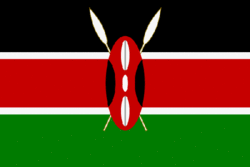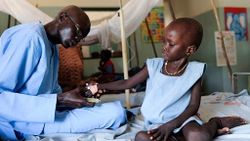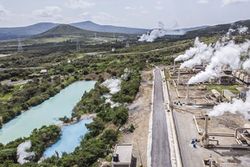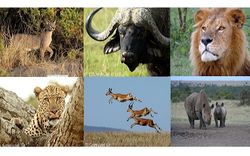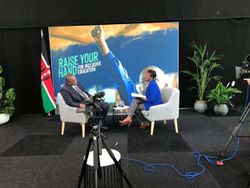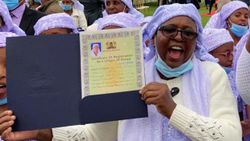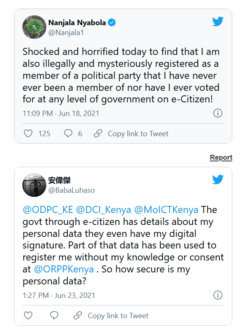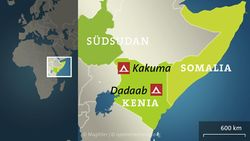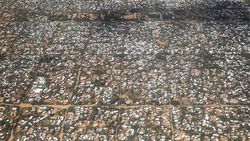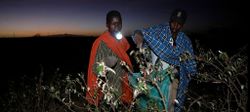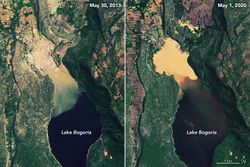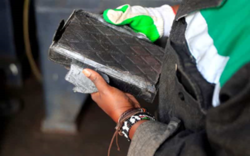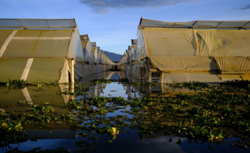Länderupdate: Kenia: Unterschied zwischen den Versionen
Keine Bearbeitungszusammenfassung |
Keine Bearbeitungszusammenfassung |
||
| Zeile 38: | Zeile 38: | ||
== 2022 == | == 2022 == | ||
=== Februar === | |||
==== Corona ==== | |||
{| style="width: 500px" cellspacing="1" cellpadding="1" border="1" | |||
|+ '''Corona-Fallzahlen ([https://news.google.com/covid19/map?hl=en-US&mid=/m/019rg5&gl=US&ceid=US:en 28.02.2022])''' | |||
|- | |||
| style="text-align: center" | <span class="author-d-iz88z86z86za0dz67zz78zz78zz74zz68zjz80zz71z9iz90z9z84zoz89zz89z17gz86zfh9z68zfz66zz81z3z78zc1z71zem2wkz76z5z71zz74z0">Total cases:</span> | |||
| style="text-align: center" | <span class="author-d-iz88z86z86za0dz67zz78zz78zz74zz68zjz80zz71z9iz90z9z84zoz89zz89z17gz86zfh9z68zfz66zz81z3z78zc1z71zem2wkz76z5z71zz74z0">Deaths:</span> | |||
| style="text-align: center" | <span class="author-d-iz88z86z86za0dz67zz78zz78zz74zz68zjz80zz71z9iz90z9z84zoz89zz89z17gz86zfh9z68zfz66zz81z3z78zc1z71zem2wkz76z5z71zz74z0">Total doses given:</span> | |||
|- | |||
| style="text-align: center" | <span class="author-d-iz88z86z86za0dz67zz78zz78zz74zz68zjz80zz71z9iz90z9z84zoz89zz89z17gz86zfh9z68zfz66zz81z3z78zc1z71zem2wkz76z5z71zz74z0">332 K</span> | |||
| style="text-align: center" | 5,6 K | |||
| style="text-align: center" | <span class="author-d-iz88z86z86za0dz67zz78zz78zz74zz68zjz80zz71z9iz90z9z84zoz89zz89z17gz86zfh9z68zfz66zz81z3z78zc1z71zem2wkz76z5z71zz74z0">16,5 Mio (15,9% fully vacinated)</span> | |||
|} | |||
==== Energy ==== | |||
*<span class="attrlink url author-d-iz88z86z86za0dz67zz78zz78zz74zz68zjz80zz71z9iz90z9z84zoz89zz89z17gz86zfh9z68zfz66zz81z3z78zc1z71zem2wkz76z5z71zz74z0">[https://www.theeastafrican.co.ke/tea/news/east-africa/kenya-connects-8-6-million-households-to-electricity-3729536 '''Kenya connects 8.6 million households to electricity''']</span> | |||
<div><div><span class="author-d-iz88z86z86za0dz67zz78zz78zz74zz68zjz80zz71z9iz90z9z84zoz89zz89z17gz86zfh9z68zfz66zz81z3z78zc1z71zem2wkz76z5z71zz74z0">Kenya has connected approximately 8.6 million households to electricity as of December 2021, up from 7.3 million in January 2020, the energy regulator said on Thursday.</span></div> <div><span class="author-d-iz88z86z86za0dz67zz78zz78zz74zz68zjz80zz71z9iz90z9z84zoz89zz89z17gz86zfh9z68zfz66zz81z3z78zc1z71zem2wkz76z5z71zz74z0">Daniel Kiptoo, director general, Energy and Petroleum Regulatory Authority</span><span class="author-d-iz88z86z86za0dz67zz78zz78zz74zz68zjz80zz71z9iz90z9z84zoz89zz89z17gz86zfh9z68zfz66zz81z3z78zc1z71zem2wkz76z5z71zz74z0 h-lparen">(EPRA)</span><span class="author-d-iz88z86z86za0dz67zz78zz78zz74zz68zjz80zz71z9iz90z9z84zoz89zz89z17gz86zfh9z68zfz66zz81z3z78zc1z71zem2wkz76z5z71zz74z0">told journalists that Kenya is the only country in East Africa with electricity access to over 75 percent of her population.</span></div> <div><span class="author-d-iz88z86z86za0dz67zz78zz78zz74zz68zjz80zz71z9iz90z9z84zoz89zz89z17gz86zfh9z68zfz66zz81z3z78zc1z71zem2wkz76z5z71zz74z0">"The increased access to electricity is a big boost towards the attainment of the country's national development blueprint vision 2030 which seeks to transform Kenya into a newly industrialising, middle-income country by the year 2030," Kiptoo said in the Kenyan capital, Nairobi, during the release of the 2021 Energy and Petroleum Statistics Report.</span></div> <div><span class="author-d-iz88z86z86za0dz67zz78zz78zz74zz68zjz80zz71z9iz90z9z84zoz89zz89z17gz86zfh9z68zfz66zz81z3z78zc1z71zem2wkz76z5z71zz74z0">Kiptoo said the country's total installed electricity capacity in the country, including off-grid power, was 2,990 MW as of the end of 2021.</span></div> <div><span class="author-d-iz88z86z86za0dz67zz78zz78zz74zz68zjz80zz71z9iz90z9z84zoz89zz89z17gz86zfh9z68zfz66zz81z3z78zc1z71zem2wkz76z5z71zz74z0">According to the energy regulator, Kenya's energy mix consists of hydro at 838 MW, geothermal at 863 MW, wind power at 437 MW, solar at 173 MW, thermal at 677 MW while biomass is at 2 percent. Kiptoo observed that bulk of electricity was generated from renewable sources, making Kenya a global leader in renewable energy.</span></div> </div> | |||
=== Januar === | === Januar === | ||
| Zeile 59: | Zeile 80: | ||
<div><span class="author-d-iz88z86z86za0dz67zz78zz78zz74zz68zjz80zz71z9iz90z9z84zoz89zz89z17gz86zfh9z68zfz66zz81z3z78zc1z71zem2wkz76z5z71zz74z0">"We recently had heavy rains and strong winds that ended up killing livestock that had gathered at this water point," he told AFP, outside a settlement called</span><span class="author-d-iz88z86z86za0dz67zz78zz78zz74zz68zjz80zz71z9iz90z9z84zoz89zz89z17gz86zfh9z68zfz66zz81z3z78zc1z71zem2wkz76z5z71zz74z0 h-apos">'kambi</span><span class="author-d-iz88z86z86za0dz67zz78zz78zz74zz68zjz80zz71z9iz90z9z84zoz89zz89z17gz86zfh9z68zfz66zz81z3z78zc1z71zem2wkz76z5z71zz74z0">ya nyoka'</span><span class="author-d-iz88z86z86za0dz67zz78zz78zz74zz68zjz80zz71z9iz90z9z84zoz89zz89z17gz86zfh9z68zfz66zz81z3z78zc1z71zem2wkz76z5z71zz74z0 h-lparen">(snake</span><span class="author-d-iz88z86z86za0dz67zz78zz78zz74zz68zjz80zz71z9iz90z9z84zoz89zz89z17gz86zfh9z68zfz66zz81z3z78zc1z71zem2wkz76z5z71zz74z0">camp) in Marsabit.</span></div> <div><span class="author-d-iz88z86z86za0dz67zz78zz78zz74zz68zjz80zz71z9iz90z9z84zoz89zz89z17gz86zfh9z68zfz66zz81z3z78zc1z71zem2wkz76z5z71zz74z0">The semi-arid region has been the scene of a prolonged drought. Then, when the rains finally came, the deluge pushed communities, who rely exclusively on livestock for their survival, to the edge of disaster.</span></div> <div><span class="author-d-iz88z86z86za0dz67zz78zz78zz74zz68zjz80zz71z9iz90z9z84zoz89zz89z17gz86zfh9z68zfz66zz81z3z78zc1z71zem2wkz76z5z71zz74z0">Nomadic livestock herders in East Africa's drylands have learnt to cope with the vagaries of weather over decades, driving their relentless search for water and pasture in some of the world's most inhospitable terrain.</span></div> <div><span class="author-d-iz88z86z86za0dz67zz78zz78zz74zz68zjz80zz71z9iz90z9z84zoz89zz89z17gz86zfh9z68zfz66zz81z3z78zc1z71zem2wkz76z5z71zz74z0">But their resilience is being severely tested by climate change.</span></div> <div><span class="author-d-iz88z86z86za0dz67zz78zz78zz74zz68zjz80zz71z9iz90z9z84zoz89zz89z17gz86zfh9z68zfz66zz81z3z78zc1z71zem2wkz76z5z71zz74z0">Poor rainfall in the last quarter of 2021</span><span class="author-d-iz88z86z86za0dz67zz78zz78zz74zz68zjz80zz71z9iz90z9z84zoz89zz89z17gz86zfh9z68zfz66zz81z3z78zc1z71zem2wkz76z5z71zz74z0 h-hyphen">--</span><span class="author-d-iz88z86z86za0dz67zz78zz78zz74zz68zjz80zz71z9iz90z9z84zoz89zz89z17gz86zfh9z68zfz66zz81z3z78zc1z71zem2wkz76z5z71zz74z0">the third consecutive failed rainy season</span><span class="author-d-iz88z86z86za0dz67zz78zz78zz74zz68zjz80zz71z9iz90z9z84zoz89zz89z17gz86zfh9z68zfz66zz81z3z78zc1z71zem2wkz76z5z71zz74z0 h-hyphen">--</span><span class="author-d-iz88z86z86za0dz67zz78zz78zz74zz68zjz80zz71z9iz90z9z84zoz89zz89z17gz86zfh9z68zfz66zz81z3z78zc1z71zem2wkz76z5z71zz74z0">followed a devastating locust invasion a year earlier, with animals now too weak to produce milk or too skinny to be sold.</span></div> <div><span class="author-d-iz88z86z86za0dz67zz78zz78zz74zz68zjz80zz71z9iz90z9z84zoz89zz89z17gz86zfh9z68zfz66zz81z3z78zc1z71zem2wkz76z5z71zz74z0">There are growing fears that as the situation worsens, tensions among communities could sharpen as they compete for access to meagre resources.</span></div> <div><span class="author-d-iz88z86z86za0dz67zz78zz78zz74zz68zjz80zz71z9iz90z9z84zoz89zz89z17gz86zfh9z68zfz66zz81z3z78zc1z71zem2wkz76z5z71zz74z0">Marsabit is particularly vulnerable because of a perennial conflict between the Borana and Gabra pastoralist communities.</span></div> <div><span class="author-d-iz88z86z86za0dz67zz78zz78zz74zz68zjz80zz71z9iz90z9z84zoz89zz89z17gz86zfh9z68zfz66zz81z3z78zc1z71zem2wkz76z5z71zz74z0">President Uhuru Kenyatta declared the drought a natural disaster last September, with 2.1 million people</span><span class="author-d-iz88z86z86za0dz67zz78zz78zz74zz68zjz80zz71z9iz90z9z84zoz89zz89z17gz86zfh9z68zfz66zz81z3z78zc1z71zem2wkz76z5z71zz74z0 h-hyphen">--</span><span class="author-d-iz88z86z86za0dz67zz78zz78zz74zz68zjz80zz71z9iz90z9z84zoz89zz89z17gz86zfh9z68zfz66zz81z3z78zc1z71zem2wkz76z5z71zz74z0">four percent of Kenya's population</span><span class="author-d-iz88z86z86za0dz67zz78zz78zz74zz68zjz80zz71z9iz90z9z84zoz89zz89z17gz86zfh9z68zfz66zz81z3z78zc1z71zem2wkz76z5z71zz74z0 h-hyphen">--</span><span class="author-d-iz88z86z86za0dz67zz78zz78zz74zz68zjz80zz71z9iz90z9z84zoz89zz89z17gz86zfh9z68zfz66zz81z3z78zc1z71zem2wkz76z5z71zz74z0">already grappling with hunger, according to government figures.</span></div> <div><span class="author-d-iz88z86z86za0dz67zz78zz78zz74zz68zjz80zz71z9iz90z9z84zoz89zz89z17gz86zfh9z68zfz66zz81z3z78zc1z71zem2wkz76z5z71zz74z0">The government said last week that 23 of the country's 47 counties faced</span><span class="author-d-iz88z86z86za0dz67zz78zz78zz74zz68zjz80zz71z9iz90z9z84zoz89zz89z17gz86zfh9z68zfz66zz81z3z78zc1z71zem2wkz76z5z71zz74z0 h-quot">"food</span><span class="author-d-iz88z86z86za0dz67zz78zz78zz74zz68zjz80zz71z9iz90z9z84zoz89zz89z17gz86zfh9z68zfz66zz81z3z78zc1z71zem2wkz76z5z71zz74z0">and water stress" while the meteorological department has warned of a potential increase in</span><span class="author-d-iz88z86z86za0dz67zz78zz78zz74zz68zjz80zz71z9iz90z9z84zoz89zz89z17gz86zfh9z68zfz66zz81z3z78zc1z71zem2wkz76z5z71zz74z0 h-quot">"human-to-human</span><span class="author-d-iz88z86z86za0dz67zz78zz78zz74zz68zjz80zz71z9iz90z9z84zoz89zz89z17gz86zfh9z68zfz66zz81z3z78zc1z71zem2wkz76z5z71zz74z0">and human-to-wildlife conflicts".</span></div> <div> </div> | <div><span class="author-d-iz88z86z86za0dz67zz78zz78zz74zz68zjz80zz71z9iz90z9z84zoz89zz89z17gz86zfh9z68zfz66zz81z3z78zc1z71zem2wkz76z5z71zz74z0">"We recently had heavy rains and strong winds that ended up killing livestock that had gathered at this water point," he told AFP, outside a settlement called</span><span class="author-d-iz88z86z86za0dz67zz78zz78zz74zz68zjz80zz71z9iz90z9z84zoz89zz89z17gz86zfh9z68zfz66zz81z3z78zc1z71zem2wkz76z5z71zz74z0 h-apos">'kambi</span><span class="author-d-iz88z86z86za0dz67zz78zz78zz74zz68zjz80zz71z9iz90z9z84zoz89zz89z17gz86zfh9z68zfz66zz81z3z78zc1z71zem2wkz76z5z71zz74z0">ya nyoka'</span><span class="author-d-iz88z86z86za0dz67zz78zz78zz74zz68zjz80zz71z9iz90z9z84zoz89zz89z17gz86zfh9z68zfz66zz81z3z78zc1z71zem2wkz76z5z71zz74z0 h-lparen">(snake</span><span class="author-d-iz88z86z86za0dz67zz78zz78zz74zz68zjz80zz71z9iz90z9z84zoz89zz89z17gz86zfh9z68zfz66zz81z3z78zc1z71zem2wkz76z5z71zz74z0">camp) in Marsabit.</span></div> <div><span class="author-d-iz88z86z86za0dz67zz78zz78zz74zz68zjz80zz71z9iz90z9z84zoz89zz89z17gz86zfh9z68zfz66zz81z3z78zc1z71zem2wkz76z5z71zz74z0">The semi-arid region has been the scene of a prolonged drought. Then, when the rains finally came, the deluge pushed communities, who rely exclusively on livestock for their survival, to the edge of disaster.</span></div> <div><span class="author-d-iz88z86z86za0dz67zz78zz78zz74zz68zjz80zz71z9iz90z9z84zoz89zz89z17gz86zfh9z68zfz66zz81z3z78zc1z71zem2wkz76z5z71zz74z0">Nomadic livestock herders in East Africa's drylands have learnt to cope with the vagaries of weather over decades, driving their relentless search for water and pasture in some of the world's most inhospitable terrain.</span></div> <div><span class="author-d-iz88z86z86za0dz67zz78zz78zz74zz68zjz80zz71z9iz90z9z84zoz89zz89z17gz86zfh9z68zfz66zz81z3z78zc1z71zem2wkz76z5z71zz74z0">But their resilience is being severely tested by climate change.</span></div> <div><span class="author-d-iz88z86z86za0dz67zz78zz78zz74zz68zjz80zz71z9iz90z9z84zoz89zz89z17gz86zfh9z68zfz66zz81z3z78zc1z71zem2wkz76z5z71zz74z0">Poor rainfall in the last quarter of 2021</span><span class="author-d-iz88z86z86za0dz67zz78zz78zz74zz68zjz80zz71z9iz90z9z84zoz89zz89z17gz86zfh9z68zfz66zz81z3z78zc1z71zem2wkz76z5z71zz74z0 h-hyphen">--</span><span class="author-d-iz88z86z86za0dz67zz78zz78zz74zz68zjz80zz71z9iz90z9z84zoz89zz89z17gz86zfh9z68zfz66zz81z3z78zc1z71zem2wkz76z5z71zz74z0">the third consecutive failed rainy season</span><span class="author-d-iz88z86z86za0dz67zz78zz78zz74zz68zjz80zz71z9iz90z9z84zoz89zz89z17gz86zfh9z68zfz66zz81z3z78zc1z71zem2wkz76z5z71zz74z0 h-hyphen">--</span><span class="author-d-iz88z86z86za0dz67zz78zz78zz74zz68zjz80zz71z9iz90z9z84zoz89zz89z17gz86zfh9z68zfz66zz81z3z78zc1z71zem2wkz76z5z71zz74z0">followed a devastating locust invasion a year earlier, with animals now too weak to produce milk or too skinny to be sold.</span></div> <div><span class="author-d-iz88z86z86za0dz67zz78zz78zz74zz68zjz80zz71z9iz90z9z84zoz89zz89z17gz86zfh9z68zfz66zz81z3z78zc1z71zem2wkz76z5z71zz74z0">There are growing fears that as the situation worsens, tensions among communities could sharpen as they compete for access to meagre resources.</span></div> <div><span class="author-d-iz88z86z86za0dz67zz78zz78zz74zz68zjz80zz71z9iz90z9z84zoz89zz89z17gz86zfh9z68zfz66zz81z3z78zc1z71zem2wkz76z5z71zz74z0">Marsabit is particularly vulnerable because of a perennial conflict between the Borana and Gabra pastoralist communities.</span></div> <div><span class="author-d-iz88z86z86za0dz67zz78zz78zz74zz68zjz80zz71z9iz90z9z84zoz89zz89z17gz86zfh9z68zfz66zz81z3z78zc1z71zem2wkz76z5z71zz74z0">President Uhuru Kenyatta declared the drought a natural disaster last September, with 2.1 million people</span><span class="author-d-iz88z86z86za0dz67zz78zz78zz74zz68zjz80zz71z9iz90z9z84zoz89zz89z17gz86zfh9z68zfz66zz81z3z78zc1z71zem2wkz76z5z71zz74z0 h-hyphen">--</span><span class="author-d-iz88z86z86za0dz67zz78zz78zz74zz68zjz80zz71z9iz90z9z84zoz89zz89z17gz86zfh9z68zfz66zz81z3z78zc1z71zem2wkz76z5z71zz74z0">four percent of Kenya's population</span><span class="author-d-iz88z86z86za0dz67zz78zz78zz74zz68zjz80zz71z9iz90z9z84zoz89zz89z17gz86zfh9z68zfz66zz81z3z78zc1z71zem2wkz76z5z71zz74z0 h-hyphen">--</span><span class="author-d-iz88z86z86za0dz67zz78zz78zz74zz68zjz80zz71z9iz90z9z84zoz89zz89z17gz86zfh9z68zfz66zz81z3z78zc1z71zem2wkz76z5z71zz74z0">already grappling with hunger, according to government figures.</span></div> <div><span class="author-d-iz88z86z86za0dz67zz78zz78zz74zz68zjz80zz71z9iz90z9z84zoz89zz89z17gz86zfh9z68zfz66zz81z3z78zc1z71zem2wkz76z5z71zz74z0">The government said last week that 23 of the country's 47 counties faced</span><span class="author-d-iz88z86z86za0dz67zz78zz78zz74zz68zjz80zz71z9iz90z9z84zoz89zz89z17gz86zfh9z68zfz66zz81z3z78zc1z71zem2wkz76z5z71zz74z0 h-quot">"food</span><span class="author-d-iz88z86z86za0dz67zz78zz78zz74zz68zjz80zz71z9iz90z9z84zoz89zz89z17gz86zfh9z68zfz66zz81z3z78zc1z71zem2wkz76z5z71zz74z0">and water stress" while the meteorological department has warned of a potential increase in</span><span class="author-d-iz88z86z86za0dz67zz78zz78zz74zz68zjz80zz71z9iz90z9z84zoz89zz89z17gz86zfh9z68zfz66zz81z3z78zc1z71zem2wkz76z5z71zz74z0 h-quot">"human-to-human</span><span class="author-d-iz88z86z86za0dz67zz78zz78zz74zz68zjz80zz71z9iz90z9z84zoz89zz89z17gz86zfh9z68zfz66zz81z3z78zc1z71zem2wkz76z5z71zz74z0">and human-to-wildlife conflicts".</span></div> <div> </div> | ||
<span class="attrlink url author-d-iz88z86z86za0dz67zz78zz78zz74zz68zjz80zz71z9iz90z9z84zoz89zz89z17gz86zfh9z68zfz66zz81z3z78zc1z71zem2wkz76z5z71zz74z0">[https://reliefweb.int/disaster/dr-2014-000131-ken '''Drought - 2014-2022''']</span> | <span class="attrlink url author-d-iz88z86z86za0dz67zz78zz78zz74zz68zjz80zz71z9iz90z9z84zoz89zz89z17gz86zfh9z68zfz66zz81z3z78zc1z71zem2wkz76z5z71zz74z0">[https://reliefweb.int/disaster/dr-2014-000131-ken '''Drought - 2014-2022''']</span> | ||
<div><span class="author-d-iz88z86z86za0dz67zz78zz78zz74zz68zjz80zz71z9iz90z9z84zoz89zz89z17gz86zfh9z68zfz66zz81z3z78zc1z71zem2wkz76z5z71zz74z0">According to CHIRPS satellite rainfall estimates, the March to May long rains have been significantly below average through April. Cumulative rainfall has been less than 55 to 70 percent of normal across much of Kenya. However, localized areas in western and northeastern Kenya have received 95-145 percent of normal rainfall. In the marginal agricultural areas, the poor rainfall is affecting agricultural production, with no germination being reported in parts of Kitui and Meru North. Due to declining household food stocks and below-average casual waged labor opportunities, poor marginal agricultural households are likely Stressed</span><span class="author-d-iz88z86z86za0dz67zz78zz78zz74zz68zjz80zz71z9iz90z9z84zoz89zz89z17gz86zfh9z68zfz66zz81z3z78zc1z71zem2wkz76z5z71zz74z0 h-lparen">(IPC</span><span class="author-d-iz88z86z86za0dz67zz78zz78zz74zz68zjz80zz71z9iz90z9z84zoz89zz89z17gz86zfh9z68zfz66zz81z3z78zc1z71zem2wkz76z5z71zz74z0">Phase 2). In pastoral areas, household income and food access are increasingly constrained due to atypical livestock migration, increased insecurity from resource-based conflict and terrorism, reduced milk production and consumption, reducing livestock sale values, and high staple food prices, driving Crisis</span><span class="author-d-iz88z86z86za0dz67zz78zz78zz74zz68zjz80zz71z9iz90z9z84zoz89zz89z17gz86zfh9z68zfz66zz81z3z78zc1z71zem2wkz76z5z71zz74z0 h-lparen">(IPC</span><span class="author-d-iz88z86z86za0dz67zz78zz78zz74zz68zjz80zz71z9iz90z9z84zoz89zz89z17gz86zfh9z68zfz66zz81z3z78zc1z71zem2wkz76z5z71zz74z0">Phase 3) outcomes.</span><span class="author-d-iz88z86z86za0dz67zz78zz78zz74zz68zjz80zz71z9iz90z9z84zoz89zz89z17gz86zfh9z68zfz66zz81z3z78zc1z71zem2wkz76z5z71zz74z0 h-lparen">(</span><span class="attrlink url author-d-iz88z86z86za0dz67zz78zz78zz74zz68zjz80zz71z9iz90z9z84zoz89zz89z17gz86zfh9z68zfz66zz81z3z78zc1z71zem2wkz76z5z71zz74z0 h-lparen">[https://reliefweb.int/node/3734776/ FEWSNET,]</span><span class="attrlink url author-d-iz88z86z86za0dz67zz78zz78zz74zz68zjz80zz71z9iz90z9z84zoz89zz89z17gz86zfh9z68zfz66zz81z3z78zc1z71zem2wkz76z5z71zz74z0">[https://reliefweb.int/node/3734776/ 30 Apr 2021]</span><span class="author-d-iz88z86z86za0dz67zz78zz78zz74zz68zjz80zz71z9iz90z9z84zoz89zz89z17gz86zfh9z68zfz66zz81z3z78zc1z71zem2wkz76z5z71zz74z0">)</span></div> <div><span class="author-d-iz88z86z86za0dz67zz78zz78zz74zz68zjz80zz71z9iz90z9z84zoz89zz89z17gz86zfh9z68zfz66zz81z3z78zc1z71zem2wkz76z5z71zz74z0">The cumulative impact of two consecutive poor rainy seasons, coupled with the COVID-19 pandemic, insecurity, pests and diseases have caused humanitarian needs to rapidly rise in the Arid and Semi-Arad Lands</span><span class="author-d-iz88z86z86za0dz67zz78zz78zz74zz68zjz80zz71z9iz90z9z84zoz89zz89z17gz86zfh9z68zfz66zz81z3z78zc1z71zem2wkz76z5z71zz74z0 h-lparen">(ASAL)</span><span class="author-d-iz88z86z86za0dz67zz78zz78zz74zz68zjz80zz71z9iz90z9z84zoz89zz89z17gz86zfh9z68zfz66zz81z3z78zc1z71zem2wkz76z5z71zz74z0">region of Kenya, leading to the declaration of a national disaster by the President of Kenya on 8 September 2021. There are now at least 2.1 million people who are severely food insecure and adopting irreversible coping strategies to meet their minimum food needs, and this is expected to rise to nearly 2.4 million people from November 2021, according to the latest Integrated Phase Classification</span><span class="author-d-iz88z86z86za0dz67zz78zz78zz74zz68zjz80zz71z9iz90z9z84zoz89zz89z17gz86zfh9z68zfz66zz81z3z78zc1z71zem2wkz76z5z71zz74z0 h-lparen">(IPC)</span><span class="author-d-iz88z86z86za0dz67zz78zz78zz74zz68zjz80zz71z9iz90z9z84zoz89zz89z17gz86zfh9z68zfz66zz81z3z78zc1z71zem2wkz76z5z71zz74z0">analysis. This will include an estimated 368,000 people in Emergency</span><span class="author-d-iz88z86z86za0dz67zz78zz78zz74zz68zjz80zz71z9iz90z9z84zoz89zz89z17gz86zfh9z68zfz66zz81z3z78zc1z71zem2wkz76z5z71zz74z0 h-lparen">(IPC</span><span class="author-d-iz88z86z86za0dz67zz78zz78zz74zz68zjz80zz71z9iz90z9z84zoz89zz89z17gz86zfh9z68zfz66zz81z3z78zc1z71zem2wkz76z5z71zz74z0">Phase 4) and 2 million people in Crisis</span><span class="author-d-iz88z86z86za0dz67zz78zz78zz74zz68zjz80zz71z9iz90z9z84zoz89zz89z17gz86zfh9z68zfz66zz81z3z78zc1z71zem2wkz76z5z71zz74z0 h-lparen">(IPC</span><span class="author-d-iz88z86z86za0dz67zz78zz78zz74zz68zjz80zz71z9iz90z9z84zoz89zz89z17gz86zfh9z68zfz66zz81z3z78zc1z71zem2wkz76z5z71zz74z0">Phase 3), and is nearly three times</span><span class="author-d-iz88z86z86za0dz67zz78zz78zz74zz68zjz80zz71z9iz90z9z84zoz89zz89z17gz86zfh9z68zfz66zz81z3z78zc1z71zem2wkz76z5z71zz74z0 h-lparen">(852,000)</span><span class="author-d-iz88z86z86za0dz67zz78zz78zz74zz68zjz80zz71z9iz90z9z84zoz89zz89z17gz86zfh9z68zfz66zz81z3z78zc1z71zem2wkz76z5z71zz74z0">the number of people who were facing high acute food insecurity from October to December 2020. Nine counties are expected to have the highest numbers of people in IPC Phase 3 and above from November 2021 onwards: Turkana, Mandera, Lamu, Garissa, Wajir, Kwale, Kitui, Tana River and Isiolo. Food insecurity is expected to worsen in the period ahead based on the likelihood of poor rains during the upcoming short rains season</span><span class="author-d-iz88z86z86za0dz67zz78zz78zz74zz68zjz80zz71z9iz90z9z84zoz89zz89z17gz86zfh9z68zfz66zz81z3z78zc1z71zem2wkz76z5z71zz74z0 h-lparen">(October</span><span class="author-d-iz88z86z86za0dz67zz78zz78zz74zz68zjz80zz71z9iz90z9z84zoz89zz89z17gz86zfh9z68zfz66zz81z3z78zc1z71zem2wkz76z5z71zz74z0">to December).</span><span class="author-d-iz88z86z86za0dz67zz78zz78zz74zz68zjz80zz71z9iz90z9z84zoz89zz89z17gz86zfh9z68zfz66zz81z3z78zc1z71zem2wkz76z5z71zz74z0 h-lparen">(</span><span class="attrlink url author-d-iz88z86z86za0dz67zz78zz78zz74zz68zjz80zz71z9iz90z9z84zoz89zz89z17gz86zfh9z68zfz66zz81z3z78zc1z71zem2wkz76z5z71zz74z0 h-lparen">[https://reliefweb.int/node/3778693/ OCHA,]</span><span class="attrlink url author-d-iz88z86z86za0dz67zz78zz78zz74zz68zjz80zz71z9iz90z9z84zoz89zz89z17gz86zfh9z68zfz66zz81z3z78zc1z71zem2wkz76z5z71zz74z0">[https://reliefweb.int/node/3778693/ 30 Sep 2021]</span><span class="author-d-iz88z86z86za0dz67zz78zz78zz74zz68zjz80zz71z9iz90z9z84zoz89zz89z17gz86zfh9z68zfz66zz81z3z78zc1z71zem2wkz76z5z71zz74z0">)</span></div> <div><span class="author-d-iz88z86z86za0dz67zz78zz78zz74zz68zjz80zz71z9iz90z9z84zoz89zz89z17gz86zfh9z68zfz66zz81z3z78zc1z71zem2wkz76z5z71zz74z0">The October to December 2021 short rains have largely failed, marking the third consecutive below-average season across pastoral and marginal agricultural areas of eastern and northern Kenya. In pastoral areas, very low pasture and water resources have driven atypical livestock migration, rapid declines in livestock health and productivity, and excess livestock deaths. The drought also follows the temporary closure of livestock markets in early 2020 due to COVID-19, which already suppressed formal livestock trade in the short-term. In marginal agricultural areas, rainfall totals have been inadequate for crop development. While the distribution of food assistance, expansion of the Hunger Safety Net Programme</span><span class="author-d-iz88z86z86za0dz67zz78zz78zz74zz68zjz80zz71z9iz90z9z84zoz89zz89z17gz86zfh9z68zfz66zz81z3z78zc1z71zem2wkz76z5z71zz74z0 h-lparen">(HSNP),</span><span class="author-d-iz88z86z86za0dz67zz78zz78zz74zz68zjz80zz71z9iz90z9z84zoz89zz89z17gz86zfh9z68zfz66zz81z3z78zc1z71zem2wkz76z5z71zz74z0">and the delivery of water and livestock feed are helping to prevent more severe food insecurity, widespread Crisis</span><span class="author-d-iz88z86z86za0dz67zz78zz78zz74zz68zjz80zz71z9iz90z9z84zoz89zz89z17gz86zfh9z68zfz66zz81z3z78zc1z71zem2wkz76z5z71zz74z0 h-lparen">(IPC</span><span class="author-d-iz88z86z86za0dz67zz78zz78zz74zz68zjz80zz71z9iz90z9z84zoz89zz89z17gz86zfh9z68zfz66zz81z3z78zc1z71zem2wkz76z5z71zz74z0">Phase 3) outcomes persist, with worst-affected households in Emergency</span><span class="author-d-iz88z86z86za0dz67zz78zz78zz74zz68zjz80zz71z9iz90z9z84zoz89zz89z17gz86zfh9z68zfz66zz81z3z78zc1z71zem2wkz76z5z71zz74z0 h-lparen">(IPC</span><span class="author-d-iz88z86z86za0dz67zz78zz78zz74zz68zjz80zz71z9iz90z9z84zoz89zz89z17gz86zfh9z68zfz66zz81z3z78zc1z71zem2wkz76z5z71zz74z0">Phase 4). With the elevated likelihood of a fourth consecutive below-average season during the March to May 2022 long rains, there is high concern that food insecurity will increase in severity and scale in 2022, and FEWS NET expects 3-4 million people will be in need of humanitarian food assistance in Kenya. Large-scale humanitarian assistance and livelihoods support are urgently required to cover current needs in northern and eastern Kenya, and assistance should be sustained throughout 2022.(</span><span class="attrlink url author-d-iz88z86z86za0dz67zz78zz78zz74zz68zjz80zz71z9iz90z9z84zoz89zz89z17gz86zfh9z68zfz66zz81z3z78zc1z71zem2wkz76z5z71zz74z0">[https://reliefweb.int/node/3802558/ FEWSNET, 20 Dec 2021]</span><span class="author-d-iz88z86z86za0dz67zz78zz78zz74zz68zjz80zz71z9iz90z9z84zoz89zz89z17gz86zfh9z68zfz66zz81z3z78zc1z71zem2wkz76z5z71zz74z0">)</span></div> | <div><span class="author-d-iz88z86z86za0dz67zz78zz78zz74zz68zjz80zz71z9iz90z9z84zoz89zz89z17gz86zfh9z68zfz66zz81z3z78zc1z71zem2wkz76z5z71zz74z0">According to CHIRPS satellite rainfall estimates, the March to May long rains have been significantly below average through April. Cumulative rainfall has been less than 55 to 70 percent of normal across much of Kenya. However, localized areas in western and northeastern Kenya have received 95-145 percent of normal rainfall. In the marginal agricultural areas, the poor rainfall is affecting agricultural production, with no germination being reported in parts of Kitui and Meru North. Due to declining household food stocks and below-average casual waged labor opportunities, poor marginal agricultural households are likely Stressed</span><span class="author-d-iz88z86z86za0dz67zz78zz78zz74zz68zjz80zz71z9iz90z9z84zoz89zz89z17gz86zfh9z68zfz66zz81z3z78zc1z71zem2wkz76z5z71zz74z0 h-lparen">(IPC</span><span class="author-d-iz88z86z86za0dz67zz78zz78zz74zz68zjz80zz71z9iz90z9z84zoz89zz89z17gz86zfh9z68zfz66zz81z3z78zc1z71zem2wkz76z5z71zz74z0">Phase 2). In pastoral areas, household income and food access are increasingly constrained due to atypical livestock migration, increased insecurity from resource-based conflict and terrorism, reduced milk production and consumption, reducing livestock sale values, and high staple food prices, driving Crisis</span><span class="author-d-iz88z86z86za0dz67zz78zz78zz74zz68zjz80zz71z9iz90z9z84zoz89zz89z17gz86zfh9z68zfz66zz81z3z78zc1z71zem2wkz76z5z71zz74z0 h-lparen">(IPC</span><span class="author-d-iz88z86z86za0dz67zz78zz78zz74zz68zjz80zz71z9iz90z9z84zoz89zz89z17gz86zfh9z68zfz66zz81z3z78zc1z71zem2wkz76z5z71zz74z0">Phase 3) outcomes.</span><span class="author-d-iz88z86z86za0dz67zz78zz78zz74zz68zjz80zz71z9iz90z9z84zoz89zz89z17gz86zfh9z68zfz66zz81z3z78zc1z71zem2wkz76z5z71zz74z0 h-lparen">(</span><span class="attrlink url author-d-iz88z86z86za0dz67zz78zz78zz74zz68zjz80zz71z9iz90z9z84zoz89zz89z17gz86zfh9z68zfz66zz81z3z78zc1z71zem2wkz76z5z71zz74z0 h-lparen">[https://reliefweb.int/node/3734776/ FEWSNET,]</span><span class="attrlink url author-d-iz88z86z86za0dz67zz78zz78zz74zz68zjz80zz71z9iz90z9z84zoz89zz89z17gz86zfh9z68zfz66zz81z3z78zc1z71zem2wkz76z5z71zz74z0">[https://reliefweb.int/node/3734776/ 30 Apr 2021]</span><span class="author-d-iz88z86z86za0dz67zz78zz78zz74zz68zjz80zz71z9iz90z9z84zoz89zz89z17gz86zfh9z68zfz66zz81z3z78zc1z71zem2wkz76z5z71zz74z0">)</span></div> <div><span class="author-d-iz88z86z86za0dz67zz78zz78zz74zz68zjz80zz71z9iz90z9z84zoz89zz89z17gz86zfh9z68zfz66zz81z3z78zc1z71zem2wkz76z5z71zz74z0">The cumulative impact of two consecutive poor rainy seasons, coupled with the COVID-19 pandemic, insecurity, pests and diseases have caused humanitarian needs to rapidly rise in the Arid and Semi-Arad Lands</span><span class="author-d-iz88z86z86za0dz67zz78zz78zz74zz68zjz80zz71z9iz90z9z84zoz89zz89z17gz86zfh9z68zfz66zz81z3z78zc1z71zem2wkz76z5z71zz74z0 h-lparen">(ASAL)</span><span class="author-d-iz88z86z86za0dz67zz78zz78zz74zz68zjz80zz71z9iz90z9z84zoz89zz89z17gz86zfh9z68zfz66zz81z3z78zc1z71zem2wkz76z5z71zz74z0">region of Kenya, leading to the declaration of a national disaster by the President of Kenya on 8 September 2021. There are now at least 2.1 million people who are severely food insecure and adopting irreversible coping strategies to meet their minimum food needs, and this is expected to rise to nearly 2.4 million people from November 2021, according to the latest Integrated Phase Classification</span><span class="author-d-iz88z86z86za0dz67zz78zz78zz74zz68zjz80zz71z9iz90z9z84zoz89zz89z17gz86zfh9z68zfz66zz81z3z78zc1z71zem2wkz76z5z71zz74z0 h-lparen">(IPC)</span><span class="author-d-iz88z86z86za0dz67zz78zz78zz74zz68zjz80zz71z9iz90z9z84zoz89zz89z17gz86zfh9z68zfz66zz81z3z78zc1z71zem2wkz76z5z71zz74z0">analysis. This will include an estimated 368,000 people in Emergency</span><span class="author-d-iz88z86z86za0dz67zz78zz78zz74zz68zjz80zz71z9iz90z9z84zoz89zz89z17gz86zfh9z68zfz66zz81z3z78zc1z71zem2wkz76z5z71zz74z0 h-lparen">(IPC</span><span class="author-d-iz88z86z86za0dz67zz78zz78zz74zz68zjz80zz71z9iz90z9z84zoz89zz89z17gz86zfh9z68zfz66zz81z3z78zc1z71zem2wkz76z5z71zz74z0">Phase 4) and 2 million people in Crisis</span><span class="author-d-iz88z86z86za0dz67zz78zz78zz74zz68zjz80zz71z9iz90z9z84zoz89zz89z17gz86zfh9z68zfz66zz81z3z78zc1z71zem2wkz76z5z71zz74z0 h-lparen">(IPC</span><span class="author-d-iz88z86z86za0dz67zz78zz78zz74zz68zjz80zz71z9iz90z9z84zoz89zz89z17gz86zfh9z68zfz66zz81z3z78zc1z71zem2wkz76z5z71zz74z0">Phase 3), and is nearly three times</span><span class="author-d-iz88z86z86za0dz67zz78zz78zz74zz68zjz80zz71z9iz90z9z84zoz89zz89z17gz86zfh9z68zfz66zz81z3z78zc1z71zem2wkz76z5z71zz74z0 h-lparen">(852,000)</span><span class="author-d-iz88z86z86za0dz67zz78zz78zz74zz68zjz80zz71z9iz90z9z84zoz89zz89z17gz86zfh9z68zfz66zz81z3z78zc1z71zem2wkz76z5z71zz74z0">the number of people who were facing high acute food insecurity from October to December 2020. Nine counties are expected to have the highest numbers of people in IPC Phase 3 and above from November 2021 onwards: Turkana, Mandera, Lamu, Garissa, Wajir, Kwale, Kitui, Tana River and Isiolo. Food insecurity is expected to worsen in the period ahead based on the likelihood of poor rains during the upcoming short rains season</span><span class="author-d-iz88z86z86za0dz67zz78zz78zz74zz68zjz80zz71z9iz90z9z84zoz89zz89z17gz86zfh9z68zfz66zz81z3z78zc1z71zem2wkz76z5z71zz74z0 h-lparen">(October</span><span class="author-d-iz88z86z86za0dz67zz78zz78zz74zz68zjz80zz71z9iz90z9z84zoz89zz89z17gz86zfh9z68zfz66zz81z3z78zc1z71zem2wkz76z5z71zz74z0">to December).</span><span class="author-d-iz88z86z86za0dz67zz78zz78zz74zz68zjz80zz71z9iz90z9z84zoz89zz89z17gz86zfh9z68zfz66zz81z3z78zc1z71zem2wkz76z5z71zz74z0 h-lparen">(</span><span class="attrlink url author-d-iz88z86z86za0dz67zz78zz78zz74zz68zjz80zz71z9iz90z9z84zoz89zz89z17gz86zfh9z68zfz66zz81z3z78zc1z71zem2wkz76z5z71zz74z0 h-lparen">[https://reliefweb.int/node/3778693/ OCHA,]</span><span class="attrlink url author-d-iz88z86z86za0dz67zz78zz78zz74zz68zjz80zz71z9iz90z9z84zoz89zz89z17gz86zfh9z68zfz66zz81z3z78zc1z71zem2wkz76z5z71zz74z0">[https://reliefweb.int/node/3778693/ 30 Sep 2021]</span><span class="author-d-iz88z86z86za0dz67zz78zz78zz74zz68zjz80zz71z9iz90z9z84zoz89zz89z17gz86zfh9z68zfz66zz81z3z78zc1z71zem2wkz76z5z71zz74z0">)</span></div> <div><span class="author-d-iz88z86z86za0dz67zz78zz78zz74zz68zjz80zz71z9iz90z9z84zoz89zz89z17gz86zfh9z68zfz66zz81z3z78zc1z71zem2wkz76z5z71zz74z0">The October to December 2021 short rains have largely failed, marking the third consecutive below-average season across pastoral and marginal agricultural areas of eastern and northern Kenya. In pastoral areas, very low pasture and water resources have driven atypical livestock migration, rapid declines in livestock health and productivity, and excess livestock deaths. The drought also follows the temporary closure of livestock markets in early 2020 due to COVID-19, which already suppressed formal livestock trade in the short-term. In marginal agricultural areas, rainfall totals have been inadequate for crop development. While the distribution of food assistance, expansion of the Hunger Safety Net Programme</span><span class="author-d-iz88z86z86za0dz67zz78zz78zz74zz68zjz80zz71z9iz90z9z84zoz89zz89z17gz86zfh9z68zfz66zz81z3z78zc1z71zem2wkz76z5z71zz74z0 h-lparen">(HSNP),</span><span class="author-d-iz88z86z86za0dz67zz78zz78zz74zz68zjz80zz71z9iz90z9z84zoz89zz89z17gz86zfh9z68zfz66zz81z3z78zc1z71zem2wkz76z5z71zz74z0">and the delivery of water and livestock feed are helping to prevent more severe food insecurity, widespread Crisis</span><span class="author-d-iz88z86z86za0dz67zz78zz78zz74zz68zjz80zz71z9iz90z9z84zoz89zz89z17gz86zfh9z68zfz66zz81z3z78zc1z71zem2wkz76z5z71zz74z0 h-lparen">(IPC</span><span class="author-d-iz88z86z86za0dz67zz78zz78zz74zz68zjz80zz71z9iz90z9z84zoz89zz89z17gz86zfh9z68zfz66zz81z3z78zc1z71zem2wkz76z5z71zz74z0">Phase 3) outcomes persist, with worst-affected households in Emergency</span><span class="author-d-iz88z86z86za0dz67zz78zz78zz74zz68zjz80zz71z9iz90z9z84zoz89zz89z17gz86zfh9z68zfz66zz81z3z78zc1z71zem2wkz76z5z71zz74z0 h-lparen">(IPC</span><span class="author-d-iz88z86z86za0dz67zz78zz78zz74zz68zjz80zz71z9iz90z9z84zoz89zz89z17gz86zfh9z68zfz66zz81z3z78zc1z71zem2wkz76z5z71zz74z0">Phase 4). With the elevated likelihood of a fourth consecutive below-average season during the March to May 2022 long rains, there is high concern that food insecurity will increase in severity and scale in 2022, and FEWS NET expects 3-4 million people will be in need of humanitarian food assistance in Kenya. Large-scale humanitarian assistance and livelihoods support are urgently required to cover current needs in northern and eastern Kenya, and assistance should be sustained throughout 2022.(</span><span class="attrlink url author-d-iz88z86z86za0dz67zz78zz78zz74zz68zjz80zz71z9iz90z9z84zoz89zz89z17gz86zfh9z68zfz66zz81z3z78zc1z71zem2wkz76z5z71zz74z0">[https://reliefweb.int/node/3802558/ FEWSNET, 20 Dec 2021]</span><span class="author-d-iz88z86z86za0dz67zz78zz78zz74zz68zjz80zz71z9iz90z9z84zoz89zz89z17gz86zfh9z68zfz66zz81z3z78zc1z71zem2wkz76z5z71zz74z0">)</span></div> | ||
== 2021 == | == 2021 == | ||
Version vom 28. Februar 2022, 12:38 Uhr
| Kenia | |
|---|---|
| Land | Republik Kenia |
| Staatsform | Präsidentielle Republik |
| Hauptstadt | Nairobi |
| Einwohnerzahl | 48,46 Mio. (Stand 2017) |
| Fläche | 580.367 km² |
| Ansprechperson | Dennis_Wolter |
Kenia ist ein Land im Osten Afrikas mit einer Bevölkerung von etwa 43 Millionen Einwohnern. Präsident ist Uhuru Kenyatta. Das Land wurde am 12. Dezember 1963 unabhängig. Die Wirtschaft Kenias ist, gemessen am Bruttoinlandsprodukt, die größte in Südost- und Zentralafrika.
Zuletzt nahm die Gewalt in Kenia zu, seit das Land im Jahr 2011 Truppen in den Süden Somalias schickte, um dort gegen die Shebab-Miliz zu kämpfen.
Auf dieser Seite erfährst du, was gerade im Kenia so abgeht.
Und hier findest du weitere Infos zu unseren Projekten in Kenia.
2022
Februar
Corona
| 5,6 K |
Energy
Januar
Corona
| 5,6 K |
Naturkatastrophe
2021
November
Corona
| 5.281 |
Oktober
Corona
| 5.123 |
Malaria
Internationale Politik
September
Corona
| 4.726 |
Steigende COVID-Infektionszahlen treiben die Nachfrage nach Sauerstoff
Tierschutz
August
Corona
| 3.946 |
Naturschutz
Politik vs. Justiz
Juli
Corona
| 3.634 |
Juni
Corona
Kenia hat 358.700 Dosen Oxford-AstraZeneca-Impfstoffe erhalten, die von der dänischen Regierung gespendet wurden, um seine Impfbemühungen zu verstärken. Dies wird dazu beitragen, den Mangel an Coronavirus-Impfstoffen zu verringern, die als zweite Dosis an Mitarbeiter:innen des Gesundheitswesens und an vorderster Front verabreicht werden.
Das Gesundheitsministerium sagt, dass die neuen Dosen in verschiedene Einrichtungen im ganzen Land gebracht werden. Fast eine Million Kenianer:innen wurden mit dem AstraZeneca-Impfstoff geimpft, wobei die Mehrheit noch auf die zweite Impfung wartet. Die gespendeten COVID-19-Impfstoffe haben eine Lebensdauer von einem Monat und sind bis Ende Juli sicher. Außerdem haben die USA im Rahmen des Covax-Programms etwa 10 Millionen Impfstoffdosen für Afrika gespendet, die an Länder weitergegeben werden sollen, die in Abstimmung mit der Afrikanischen Union ausgewählt werden.
Die kenianischen Behörden bitten Bürger:innen, die ohne ihre Zustimmung als Angehörige einer politischen Partei registriert sind, das Problem zu melden. Viele Menschen in den sozialen Medien haben in der vergangenen Woche ihre Wut geäußert, nachdem sie im e-Citizen-Portal der Regierung herausgefunden hatten, dass ihre persönlichen Daten verwendet wurden, um sie ohne deren Wissen bei politischen Parteien zu registrieren. Die Seite des Kanzleramts auf dem Portal wurde zwischenzeitlich mit einer Mitteilung über die Einstellung des Dienstes , "um wertvolle Rückmeldungen zu berücksichtigen, die das Amt erhalten hat". Das kürzlich eingerichtete Büro des Datenschutzbeauftragten sagte, es habe bereits mehr als 200 Beschwerden von geschädigten Personen erhalten – und forderte andere auf, sich zu melden, wenn sie sich abmelden wollten. In einer sagte die Agentur auch, dass sie mit anderen Agenturen zusammenarbeitet, um die Einhaltung der Datenschutzgesetze sicherstellen.
Mai
Corona
April
Corona
WASH
In Afrika leben schätzungsweise 160 Millionen Menschen mit Wasserknappheit. Entweder, weil es nicht genug Wasser gibt, oder es ist nicht sicher zu konsumieren. Für Orte wie Kenias Hauptstadt Nairobi wächst das Problem, da sich immer mehr Menschen in der Stadt niederlassen.
In einigen Gegenden ist es besonders schlimm, an Orten wie Dandora Phase 4 in den Vororten. "Im Moment ist kein Wasser in den Wasserhähnen", sagt Caroline Achieng.
Die Stadtbehörden machen Wasserkartelle für das Problem verantwortlich, die entweder Wasser horten oder gewinnbringend verkaufen. Aber ist das wirklich so einfach?
Professor George Okoye von der Universität Nairobi sagt, die Stadt sei mit ihren Infrastrukturinvestitionen "19 Jahre zu spät.
Die Judicial Service Commission interviewte 10 Kandidat:innen für die Position. Ihre Nominierung wurde nun von der Kommission an den Präsidenten zur Ernennung weitergeleitet. Das Büro der UN Women in Kenia gratulierte Richterin Koome.
Geflüchtete
März
Wirtschaft/Agrarkultur
Februar
Corona
Umwelt
Januar
Corona
Nachhaltigkeit
Matee bekommt den Abfall von Verpackungsfabriken kostenlos, obwohl sie für das Plastik bezahlt, das sie von anderen Recyclern bekommt. Ihre Fabrik produziert täglich 1.500 Ziegelsteine, die aus einer Mischung verschiedener Kunststoffarten bestehen. Dies sind hochdichtes Polyethylen, das in Milch- und Shampooflaschen verwendet wird; Polyethylen niedriger Dichte, das häufig für Müslitüten oder Sandwiches verwendet wird; und Polypropylen, das für Seile, Klappdeckel und Eimer verwendet wird.
Diplomatische Fehde mit Somalia
Die diplomatische Fehde zwischen Kenia und Somalia eskalierte diese Woche, nachdem Mogadischu Nairobi beschuldigt hatte, hinter einem Angriff in einer Grenzstadt zu stehen, bei dem elf Zivilist:innen getötet wurden. In mehreren Erklärungen beschuldigte Somalia das kenianische Militär, hinter einer jubaländischen Miliz zu stehen, die am 25. Januar in der Grenzstadt Balad Hawa gegen Regierungstruppen kämpfte.
Berichte über den Angriff kamen gerade als Somalia damit drohte, das Regionalgremium der zwischenstaatlichen Entwicklungsbehörde (IGAD) zu verlassen, das Dschibuti im Dezember mit einer Erkundungsmission beauftragt hatte. Die Erkundungsmission war Teil eines Versuchs, die Spannungen zu beruhigen, nachdem Somalia die diplomatischen Beziehungen abgebrochen hatte.
Überschwemmungen
Jetzt bringen diese Überschwemmungen und die wirtschaftlichen Folgen von COVID-19 hungrige Fischer gegen hungrige Flusspferde auf – mit tödlichen Folgen.
zufolge wurden im Jahr 2020 etwa 40 Menschen – hauptsächlich Fischer – von Flusspferden auf dem Lake Naivasha angegriffen, und von ihnen starben. Jedes Jahr töten Flusspferde in Afrika schätzungsweise 500 Menschen und sind damit nach dem Menschen das tödlichste Säugetier der Welt und fast doppelt so tödlich wie Löwen. Nilpferde sind Pflanzenfresser und stören andere Tiere . Aber Männchen können aggressiv werden, wenn sie Gefahr spüren. Mütter können angreifen, um ihre Jungen zu schützen. Und fast alle Nilpferde werden nervös, wenn etwas – oder jemand – zwischen ihnen und dem Wasser steht, in dem sie leben.
Ab Oktober 2019 kam es im Great Rift Valley in Kenia zu heftigen Regenfällen, die dazu führten, dass der Lake Naivasha, der keinen Abfluss hat, auf seine ausgedehnteste Größe seit fast einem Jahrhundert anwuchs. Der See hat Gebiete überschwemmt, die von Flusspferden frequentiert werden, was sie in die gleichen flachen Gewässer wie Fischer zwingt und zu mehr Flusspferdangriffen führt.
Und die Zahl der Fischer – einmal von Dutzenden, vielleicht höchstens ein paar Hundert – stieg in die Tausende, nachdem die durch die COVID-19-Pandemie verursachte globale Wirtschaftskrise die Region heimgesucht hatte.
Weiterführende Infos
Wenn dir diese Seite gefallen hat, könntest du dich auch für unsere WASH Projekte in Kenia interessieren:
Hier erfährst du, was WASH Projekte überhaupt sind und hier erfährst du mehr über Kenias Nachbarländer Uganda, Tansania und Äthiopien.
